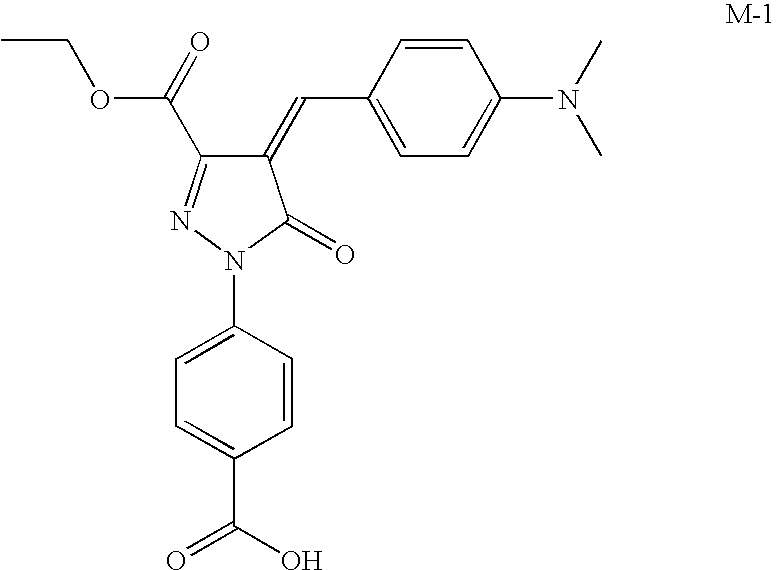High-speed radiographic film
a radiographic film and high-speed technology, applied in the field of radiography, can solve the problems of poor image quality and poor resolution, and achieve the effects of improving image quality (resolution or sharpness), reducing imaging x-ray dosage, and improving dmax
- Summary
- Abstract
- Description
- Claims
- Application Information
AI Technical Summary
Benefits of technology
Problems solved by technology
Method used
Image
Examples
example 1
[0086]Radiographic Film A (Control):
[0087]Radiographic Film A was a duplitized film having the two different silver halide emulsion layers on each side of a blue-tinted 170 μm transparent poly(ethylene terephthalate) film support and an interlayer and overcoat layer over each emulsion layer. The emulsions of Film A were not prepared using oxidized gelatin.
[0088]Radiographic Film A had the following layer arrangement:
[0089]Overcoat
[0090]Interlayer
[0091]Emulsion Layer 1
[0092]Emulsion Layer 2
[0093]Support
[0094]Emulsion Layer 2
[0095]Emulsion Layer 1
[0096]Interlayer
[0097]Overcoat
[0098]The noted layers were prepared from the following formulations.
[0099]
Coverage (mg / dm2)Overcoat FormulationGelatin vehicle3.4Methyl methacrylate matte beads0.14Carboxymethyl casein0.57Colloidal silica (LUDOX AM)0.57Polyacrylamide0.57Chrome alum0.025Resorcinol0.058Spermafol0.15Interlayer FormulationGelatin vehicle3.4Carboxymethyl casein0.57Colloidal silica (LUDOX AM)0.57Polyacrylamide0.57Chrome alum0.025Resor...
example 2
[0121]Radiographic Film C (Invention) was a duplitized symmetric radiographic film with two different silver halide emulsion layers on each side of the support. The two emulsion layers contained tabular silver halide grains that were prepared and dispersed in oxidized gelatin that had been added at multiple times before and / or during the nucleation and early growth of the silver bromide tabular grains dispersed therein. The tabular grains of the innermost silver halide emulsion layers had a mean aspect ratio of about 40 and the tabular grains of the outermost silver halide emulsion layers had a mean aspect ratio of about 40. The nucleation and early growth of the tabular grains were performed using a “bromide-ion-concentration free-fall” process in which a dilute silver nitrate solution was slowly added to a bromide ion-rich deionized oxidized gelatin environment. The grains were chemically sensitized with sulfur, gold, and selenium using conventional procedures. Spectral sensitizat...
example 3
[0137]Radiographic Film D (Invention) was a duplitized, symmetric radiographic film with the same silver halide emulsion layer on each side of the support. Unlike Films B and C, Film D contained no crossover control agent. The two emulsion layers contained tabular silver halide grains that were prepared and dispersed in oxidized gelatin that had been added at multiple times before and / or during the nucleation and early growth of the silver bromide tabular grains dispersed therein. The tabular grains of each silver halide emulsion layer had a mean aspect ratio of about 40. The nucleation and early growth of the tabular grains were performed using a “bromide-ion-concentration free-fall” process in which a dilute silver nitrate solution was slowly added to a bromide ion-rich deionized oxidized gelatin environment. The grains were chemically sensitized with sulfur, gold, and selenium using conventional procedures. Spectral sensitization to about 560 ni was provided using anhydro-5,5-dic...
PUM
| Property | Measurement | Unit |
|---|---|---|
| average grain diameter | aaaaa | aaaaa |
| aspect ratio | aaaaa | aaaaa |
| thickness | aaaaa | aaaaa |
Abstract
Description
Claims
Application Information
 Login to View More
Login to View More - R&D Engineer
- R&D Manager
- IP Professional
- Industry Leading Data Capabilities
- Powerful AI technology
- Patent DNA Extraction
Browse by: Latest US Patents, China's latest patents, Technical Efficacy Thesaurus, Application Domain, Technology Topic, Popular Technical Reports.
© 2024 PatSnap. All rights reserved.Legal|Privacy policy|Modern Slavery Act Transparency Statement|Sitemap|About US| Contact US: help@patsnap.com










